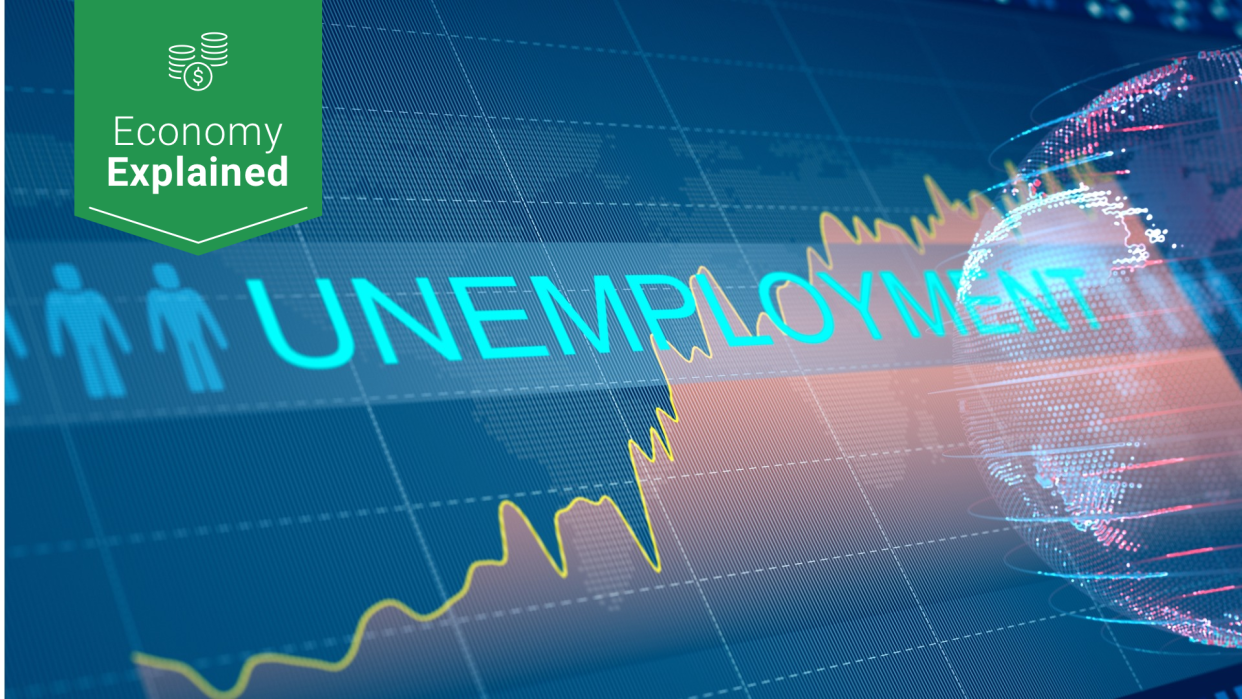What the Unemployment Rate Means for You and the Economy

The Bureau of Labor Statistics (BLS) reports the unemployment rate on the first Friday of every month. It’s up there with the GDP (gross domestic product) as one of the most important indicators of the economy’s overall health. It’s supposed to show the percentage of people who are out of work, but the way the report defines “labor force” and the way some populations are included or left out are controversial and not always representative of the reality on the ground.
The Economy and Your Money: All You Need To Know
Find Out: How To Calculate Your Debt-to-Income Ratio
There’s a Formula — but There’s Also a Better Formula
BLS measures the unemployment rate by dividing the number of unemployed people by the number of people working in America’s civilian labor force. The labor force consists of those who are employed and those who are unemployed. The problem is that to be counted as unemployed, you have to be both out of work and actively looking for work at the same time.
That leaves out a whole lot of people who just gave up and stopped looking for more than four weeks, which is the BLS cutoff. It also leaves out millions of incarcerated Americans, full-time caretakers and college students, as well as those who are disabled, dealing with long-term illnesses or who left the workforce to raise children.
Read: Understanding US Productivity and All the Ways It Affects You
The official unemployment rate is the third of six rates that the BLS issues. It’s called U-3. Many economists have argued that the official rate should instead be based on U-6, which includes all of the groups that U-3 omits. Because of those omissions, they argue, the real unemployment rate is certain to be much higher and much closer to what is reported in U-6.
Check Out: What You Should Understand About Economic Inequality and Its Impact on You
Few Flags Are Redder Than High Unemployment
Extremely low unemployment can have negative effects like inflation and lost productivity, but when lots of people are out of work, things are always bad with no exceptions.
When unemployment is high, jobs are scarce, and people are broke or worried they soon might be. They respond by pinching pennies, which means they buy less stuff from businesses that have to then lay off even more employees. It’s a self-sustaining cycle that leads to economic quicksand. A recession is defined as two or more consecutive quarters of economic decline as reflected in the GDP, and elevated unemployment is always part of the equation.
Find Out: What Is Adjusted Gross Income?
See: Understanding the Basics of Social Security
It Matters for You Whether You’re Working or Not
If enough people are out of work for a long enough period of time, social degeneration and political instability are never far behind. But the unemployment rate will impact your life long before your town turns into “Mad Max.”
It’s a lagging economic indicator. Unlike leading indicators, the unemployment rate reveals a trend that is already happening. By the first Friday of the month when the report comes out, the jobs have already been lost. That means it can tell you if things are getting worse or better and help you plan accordingly.
Instead of buying a new fridge, you might instead squirrel away the cash and hold out for another year if the unemployment rate tells you a recession is on the horizon. If you’re thinking of changing jobs or taking on work on the side, it can help you gauge how risky the leap might be and how many people you’ll be competing with. Either way, the unemployment rate is an imprecise but crucial yardstick for measuring the health of the economy and society in general.
This article is part of GOBankingRates’ ‘Economy Explained’ series to help readers navigate the complexities of our financial system.
More From GOBankingRates
Last updated: April 7, 2021
This article originally appeared on GOBankingRates.com: What the Unemployment Rate Means for You and the Economy
